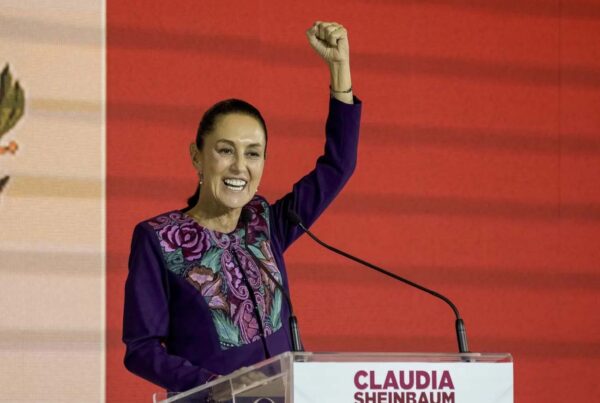Last week saw news of another mega-merger between two Houston-based oil industry heavy hitters. ConocoPhillips announced it would be buying Marathon Oil in an all-stock deal worth more than $22 billion. The deal is expected to be completed in Q4.
It’s the latest in a wave of mergers in the energy sector: Exxon, Chevron and Occidental Petroleum all announced major deals in the past year.
Matt Smith, energy analyst for Kpler, spoke with the Standard about what’s behind the recent moves in Big Oil consolidation. Listen to the interview above or read the transcript below.
This transcript has been edited lightly for clarity:
Texas Standard: What’s the driving force behind this latest mega merger between ConocoPhillips and Marathon Oil?
Matt Smith: Well, it’s a deal that gives ConocoPhillips a bigger footprint in US shale plays, but it also gives them more global exposure too. But I guess ultimately it’s cost saving and synergies.
You know, everything comes back to economics, you know. As technology continues to develop in the U.S. and efficiencies improve, it looks like Conoco is looking to revisit some of the shale plays, such as Eagle Ford in Texas and the Bakken in North Dakota, to try and get more oil from them. But ConocoPhillips is also eyeing $500 million of cost savings in the first year.
So again, it just goes back to cost savings and synergies, really.
Well, this is just the latest in a series of acquisitions across the U.S. oil patch. Why is this happening and what does it mean for the industry?
So this is the latest consolidation in a series of them. You know, Exxon Mobil, another member of Big Oil, bought Pioneer Natural Resources last October and then Chevron bought Hess a month after that.
And so we’re seeing this for a number of reasons. A key reason is because oil companies are flush with cash. They have a lot of dollars on their balance sheet. And there’s also pressure from shareholders to return that cash via higher dividends. They don’t essentially want them to invest in exploration and production of oil. And so by making acquisitions, it’s essentially a shortcut to add production to their books.
And so if you’re a smaller company, you’ve been running very hard and producing as much as you can. And given oil prices a pretty high right now, and the nature of the markets, uncertainty and instability, it’s a good time to sell. Whereas for these larger companies like Big Oil, they can gain these assets and they have resources and money to be able to effectively ride out these periods of uncertainty and essentially take an industry which is synonymous with booms and busts and make it less volatile, really.
And so [it’s] that certainty for larger companies, and then just the opportune time to sell for the smaller ones.
So switching gears, there was another big event over the weekend with a key OPEC meeting. What was the result and what does it mean for prices?
A lot happened at this meeting.
So it’s fairly complex. They have essentially three tranches of production cuts currently in place. And so for two of them, they said we’re just going to keep them in place through the entire of next year. And the market wasn’t necessarily expecting that. But it feels like OPEC+ wanted to give the market something so prices wouldn’t sell off.
But then the third tranche essentially was supposed to end this month. And what they’ve done is they’ve said, “okay, what we’ll do is we’ll look at the end of Q3 about keeping these production cuts, these voluntary production cuts, in place. But if the market doesn’t look particularly great, then maybe we’ll will extend them.” And so it’s trying to bring a bit of stability to the market here.
So ultimately there’s been very muted price response to that. But you know, you continue to have this player that is OPEC controlling 40% of the global market. And they’re using sort of these pulleys and levers to try and dictate prices.
And can you drill down, I guess, on what this means for U.S. oil producers?
So as OPEC+ tries to support prices here, it means we’re around $80 for U.S. prices. And that’s pretty good for U.S. oil producers. We’re already seeing in the U.S., we’re well above 13 million barrels a day in terms of production. And prices around these levels will continue to incentivize them to produce.
The flip side of this is always that when you have higher oil prices, it means higher prices at the pump. The price now is $3.10 for Texas, the state average. It’s down $0.20 in the last month. But if we see prices holding around these levels, we’re not going to see too much downside at the pump, unfortunately.
And a lot of demand, right? I mean, this is when people hit the road, typically.
Exactly, yes. This is the time – the next couple of months here. We’ve hit summer driving season, schools shutting up for the summer. And so yeah, you can have a lot of cars on the road.
And although you are seeing electric vehicle penetration starting to steal a little bit of that share, gasoline demand is still 9 million barrels a day. It’s very, very high, you know.













